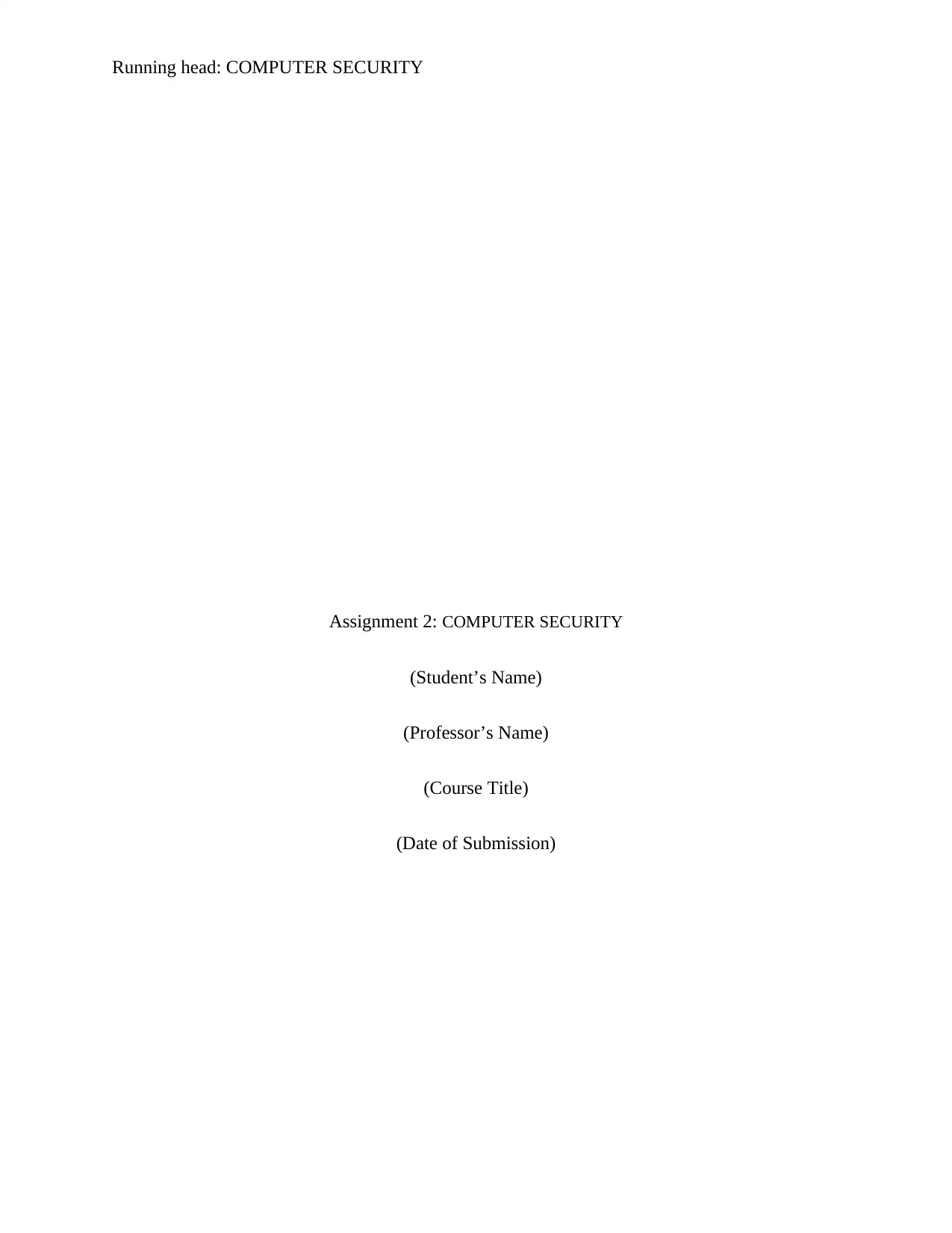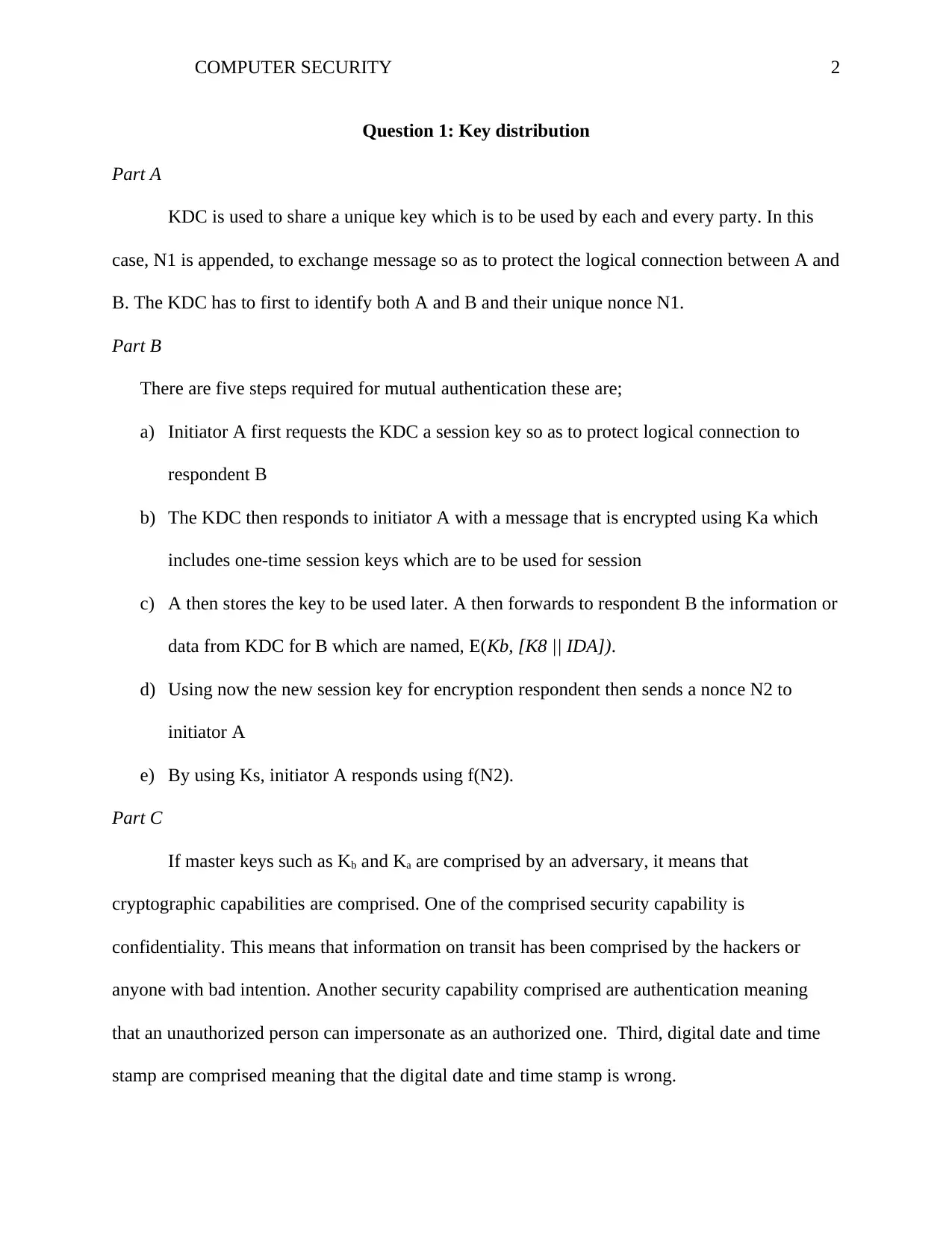Analysis of Key Distribution and Malicious Code in Computer Security
VerifiedAdded on 2023/06/03
|4
|720
|141
Homework Assignment
AI Summary
This computer security assignment delves into key distribution protocols and malicious code analysis. It discusses the use of Key Distribution Centers (KDCs) and nonces for secure key exchange, outlining the steps required for mutual authentication. The assignment also addresses the security threats associated with USB flash drives, such as worms, trojan horses, and rogue software, and proposes security methods like installing strong antivirus software and disabling Auto-run. Furthermore, it emphasizes the importance of safeguarding master keys to maintain confidentiality, authentication, and data integrity in communications. Desklib provides this solved assignment and other study resources for students.
1 out of 4





![[object Object]](/_next/static/media/star-bottom.7253800d.svg)